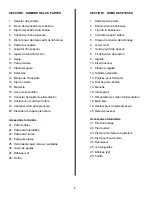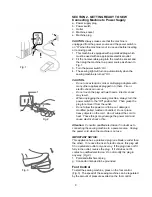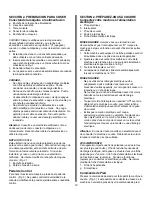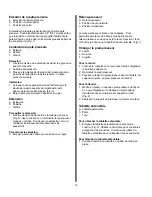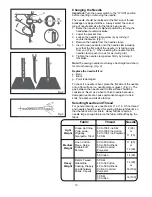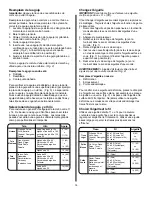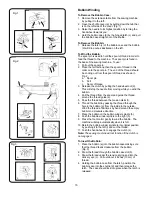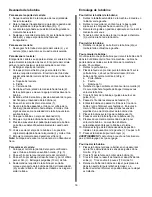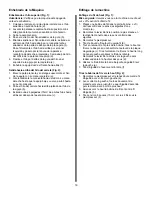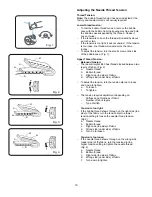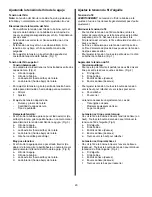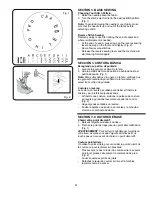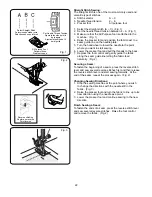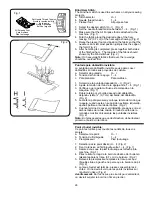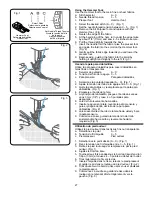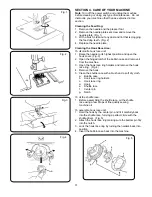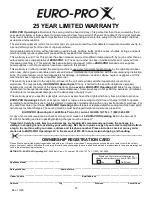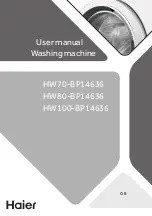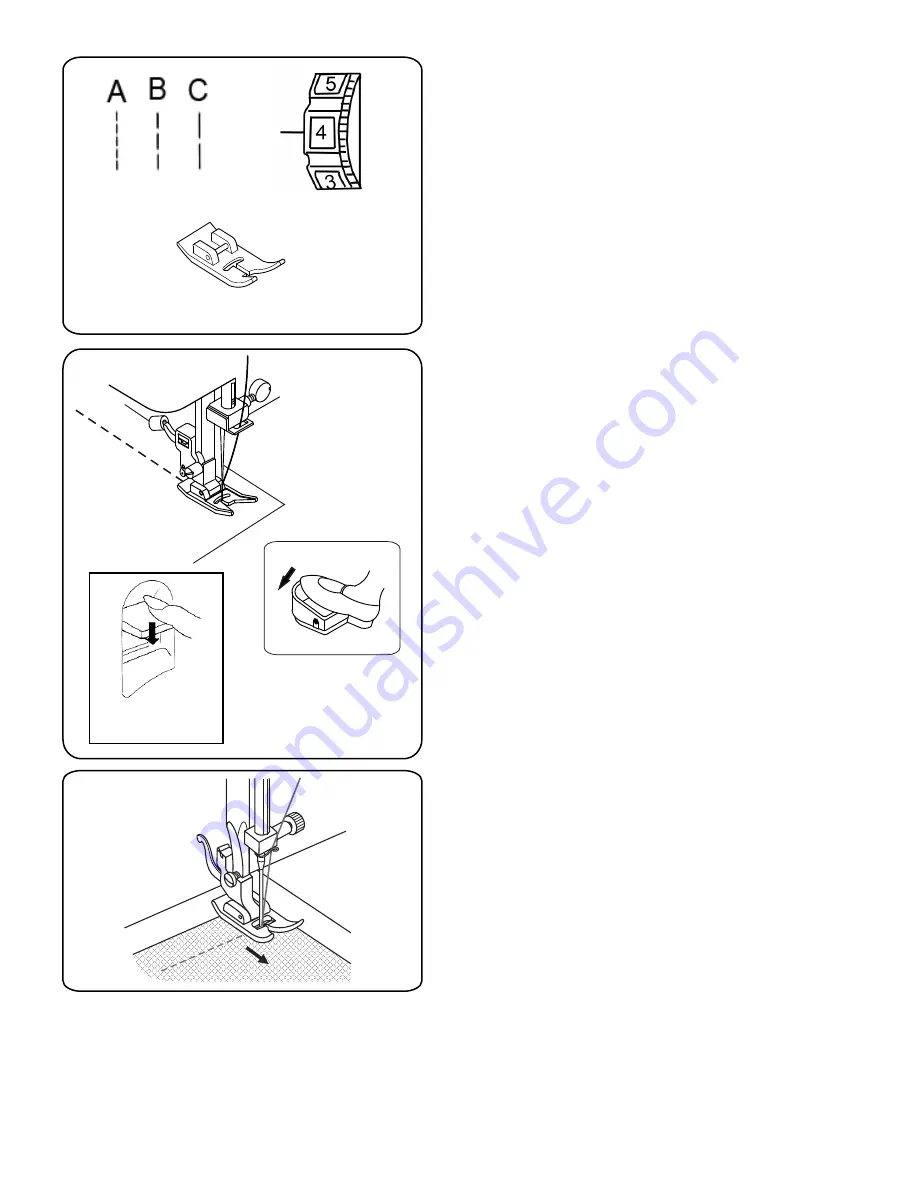
Straight Stitch Sewing:
The straight stitch is one of the most commonly used and
versatile type of stitches.
a. Stitch selector
A ~ C
b. Needle thread tension
2 ~ 6
c. Presser foot
All purpose foot
1. Select the straight stitch (A ~ C). (Fig. 1)
2. Set the needle thread tension between 2 ~ 6. (Fig. 1)
3. Make sure that the All Purpose foot is attached to the
machine. (Fig. 1)
4. Raise the presser foot and position the fabric next to a
seam guide line on the needle plate.
5. Turn the handwheel to lower the needle to the point
where you want to start sewing.
6. Lower the presser foot and pull the threads to the back.
7. Depress the foot control and gently guide the fabric
along the seam guide line letting the fabric feed
naturally. (Fig. 2)
Securing a Seam:
To fasten the beginning of a seam, press the reverse stitch
lever and sew several reverse stitches first and then release
the reverse stitch lever and start sewing forwards. At the
end of the seam, repeat the process again. (Fig. 2)
Changing Sewing Directions:
1. Stop the sewing machine at the point where you wish
to change the directions with the needle still in the
fabric. (Fig. 3)
2. Raise the presser foot and turn the fabric to line up to its
new direction using the needle as a pivot.
3. Lower the presser foot and continue sewing in the new
direction.
Finish Sewing a Seam:
To fasten the ends of a seam, press the reverse stitch lever
and sew several reverse stitches. Raise the foot control
and remove the fabric. (Fig. 2)
22
Reverse stitching
Costura en reversa
Point inversé
Select Straight Stitch
Seleccione puntada recta
Sélectionnez un point droit
Set Needle Thread Tension
Ajuste la tensión del hilo
de la aguja
Ajustez la tension de fil
de l’aiguille
All Purpose Foot
Pata multiuso
Pied tout usage
Fig. 1
Fig. 2
Fig. 3
Содержание 612C
Страница 2: ......

